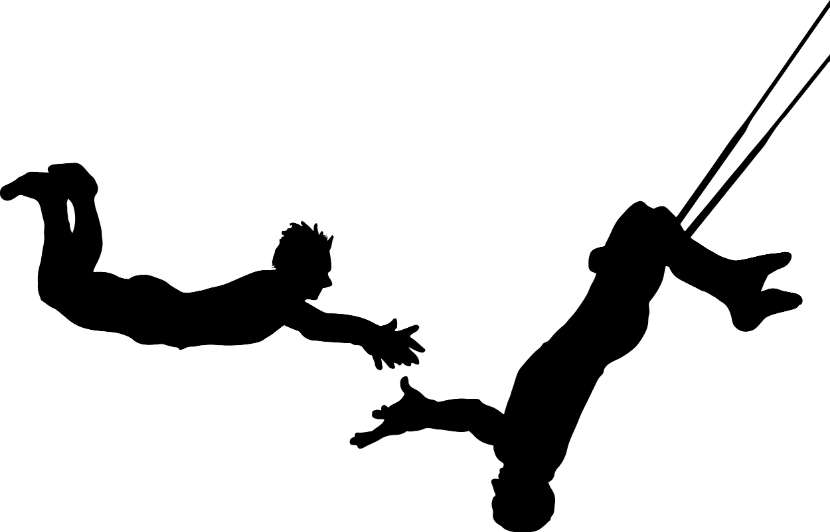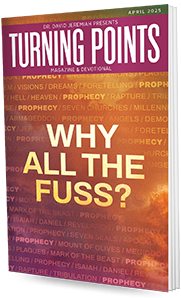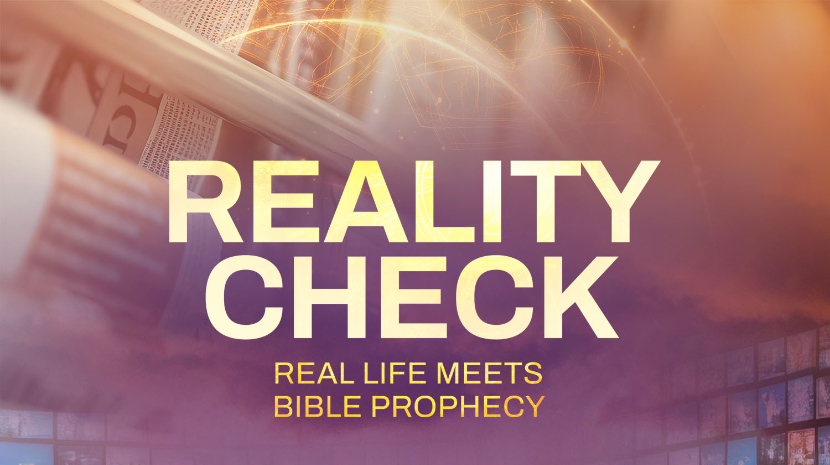From the June 2020 Issue

From This Point Forward
On recital days, our daughters and granddaughters don beautiful costumes. But the daily practice work of a ballerina is done in a time-honored uniform called the leotard. Strangely enough, the leotard was not born in the ballet school but in the world of aerial acrobatics. It was designed by, and ultimately named after, the French aerial acrobat Jules Léotard (1838-1870).
Besides popularizing the one-piece suit he wore in his acrobatic performances, Léotard is famous for developing the use of the high-flying trapeze. Trapeze acts can make use of one or several trapezes—and it’s the use of two or more that causes audiences to grip their chairs and hold their breath.
What does it take for us to “let go” of our safety and security and put our trust in God?
When you and I see aerial acrobats perform, we are amazed at their fluid motions. Even more are we amazed at their apparent fearlessness—especially the courage of the flyer who has to let go of his trapeze and depend on the catcher to keep him from falling. Yes, there is a net stretched beneath the performers to catch them should they miss a connection. But still—I can hardly imagine the feeling of letting go and trusting that your partner is going to catch you.
I think there is a good spiritual analogy for us here: What does it take for us to “let go” of our safety and security and put our trust in God?
Are you and I repeating and practicing, deepening our friendship with Jesus, and living actively in a community of faith?
Andrey Shapin was a young Russian gymnast who joined a touring company of the famous Cirque du Soleil. But he had never been an aerial flyer before. Fortunately, he was paired with Sergei Philippenko, an experienced catcher with whom he developed courage and confidence. Shapin said, “When I do my act, my heart . . . knocks so fast,” hitting his chest with his fist. But, the young flyer says, “I just know he will catch me. This is for sure.”
So how did Shapin learn to trust Philippenko when he is flying nearly 50 feet off the ground? Repetition is one way. They performed their act eight, sometimes 10 times each week when on tour. And practice is another way. Not counting the hours spent performing, they spent many hours practicing every week. Every time Philippenko caught Shapin in practice, it gave the younger performer confidence that his partner would do the same when it counted.
Rapport is also important. Shapin and Philippenko hung out together as friends; they were not just fellow performers: “We always speak. We have fun, we [tell] jokes. Sometimes if I have [a] good song, I give it to him and we’re singing together, even when we’re up there,” Shapin says. It’s easier to trust a friend than a stranger.
Finally, community played a role. The 60-plus members of their touring company were like a family. Cirque du Soleil is known for its risky performances—trust between the acrobats is an assumed part of the culture.
Do you see any parallels to learning to trust God when it is time to soar into the unknown? Repetition—the one-hundredth time you trust God is going to be easier than the first. Practice—you learn something new every time you let go and trust God. Rapport—becoming intimate with Jesus makes it easier to trust Him. Community—living in a faith community where trust is part of the culture makes it easier to learn to let go.
Are you and I repeating and practicing, deepening our friendship with Jesus, and living actively in a community of faith? Learning to “let Go and let God” will be much easier if we are.
Letting Go
Have you heard that phrase before—“Let go and let God”? There was a time years ago when it was popular; and for good reason, it faded from use. As I recall, the implication was, “You don’t have to do anything; God will do it all. Just let go and let God!”
I’m going to use that phrase here, but in its correct version. In the Christian life, we have a part and God has a part. Yes, it is God’s grace and power at work in us that allow us to do our part, so we could say it is all God. But practically speaking, we definitely have a part to play. Our part is trust, and God’s part is faithfulness.
When we “let go” in the spiritual life, we’re not letting go of our responsibility to trust God and live obediently. We’re letting go of whatever keeps our feet glued to the platform or our hands locked onto the trapeze bar—whatever keeps us from letting ourselves trust in God’s faithfulness to meet our needs.
What keeps us from “letting go” and letting God provide what we need? There are lots of things, of course. But they all fall under the heading of fear of the future, or fear of the unknown. What would keep an aerial acrobat from letting go of his bar and launching out into space? Fear of the future—even if the future is only one second away! “What if my partner doesn’t catch me? And if he doesn’t, what if the net below fails to break my fall? And if the net works, what if I land improperly and break my arm?”
What if, what if, what if. . .? Our lives can be consumed by “What if . . .?” questions. And we ask “What if . . .?” for one reason: Because we can’t see what the future holds. Yet what did the apostle Paul write in 2 Corinthians 5:7? “For we walk by faith, not by sight.”
Scripture tells us that the one thing we desperately want—the ability to see the future—is the one thing we are not to put our hopes in. We are to let go of our temporal, sight-based security, and live like Abraham: He left Mesopotamia and “went out, not knowing where he was going” (Hebrews 11:8).
Obedience and faith are never tested as deeply as when we can’t see where we are going. But that is what letting go means—letting go of our trust in ourselves and putting our trust in God’s promises and faithfulness.
Letting God
In the example of the two Cirque du Soleil acrobats I described above, one was younger and one was older; one was new and one was a veteran; one was nervous and one was confident. Though there was much that separated them, they were united in the most important dimension of all: trust.
That’s how it is with God and us. We are like the new, younger, inexperienced, and nervous acrobat who is paired with the eternal, wiser, faithful, and never-failing veteran of the troupe. The analogy breaks down if we push it too hard, of course. It is possible that the most experienced, veteran acrobat could fail to catch the flyer on any given day. Human mistakes are always possible.
But with God, mistakes are not possible! It is not in God’s character to fail. Lamentations 3:23 says God’s mercy is new “every morning”—every morning. Zephaniah 3:5 says God’s justice “never fails”—never fails. The apostle Paul says that “love never fails” (1 Corinthians 13:8)—never fails. Why? Because true love is of God and God Himself is love (1 John 4:8, 16). James 1:17 says that with God “there is no variation or shadow of turning.” God is the same yesterday, today, and forever! (Hebrews 13:8) God never fails!
An acrobat may fail to catch his partner, but God will never fail to catch you when you let go and trust Him. As soon as you say to God, “Listo!” (“Ready!”), you’ll hear His faithful reply: “Gotcha!”
[1] http://www.npr.org/2011/01/05/132678699/training-and-trust-partners-on-the-flying-trapeze (accessed 10-12-14).
More Articles
This Month's Magazine Resource

Escape the Coming Night
Studying biblical prophecy might seem overwhelming, especially diving into the book of Revelation. But as Dr David Jeremiah walks you step by step through Revelation, you will uncover the meaning of terms and events and gain a deeper knowledge of Bible prophecy.
Subscribe Now
Each month, read articles and devotionals from Dr David Jeremiah that will encourage, challenge, and strengthen your walk with the Lord.





















